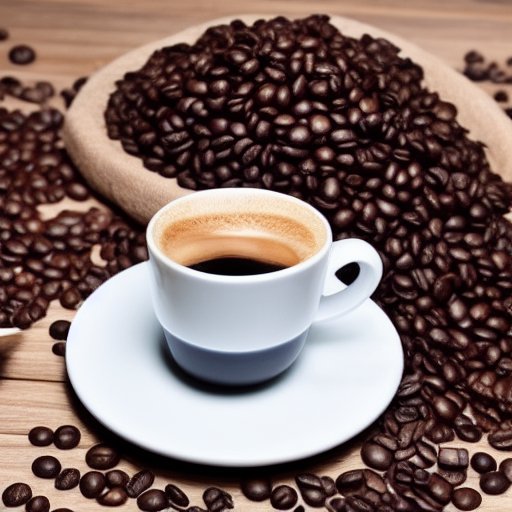The Science of Caffeine in Coffee

There's nothing like a piping hot cup of coffee first thing in the morning to jump start your day. But what exactly is it about coffee that gives us that morning jolt? The answer, of course, is caffeine. In this post, we'll take a look at the science behind caffeine in coffee and how different brewing methods can affect the caffeine content of your cup.
How Much Caffeine is in a Coffee Bean?
Coffee beans naturally contain caffeine, which is a stimulant. The amount of caffeine in a single coffee bean varies depending on the species of plant, but on average, there are about 80-90 milligrams of caffeine per bean. To put that in perspective, a can of cola has about 35 milligrams of caffeine and a cup of tea has about 40 milligrams. So one coffee bean has almost twice as much caffeine as either of those drinks.
However, before you go ahead and consume 80-90 milligrams of pure caffeine, it's important to remember that not all of the caffeine from a coffee bean actually winds up in your cup. In fact, depending on the brewing method, as little as 30% of the original caffeine content can remain after brewing. That means that if you're drinking a cup of coffee with 30 milligrams of caffeine, only 10 milligrams of that came from the actual beans. The other 20 milligrams came from additives like sugar or milk.
Brewing Methods and Caffeine Content
Now that we know how much caffeine is originally present in a coffee bean, let's take a look at how different brewing methods can affect the final caffeine content of your cup. When it comes to brewing coffee, there are several methods available: drip brewing, pour over, French press, cold brew, and espresso. Let's break each down:
Drip Brewing: Drip brewing is perhaps the most common way to brew coffee at home. It involves placing ground coffee in a filter and then slowly pouring hot water over the grounds so they can steep like tea. This method typically produces a cup with moderate amounts of caffeine - around 115-175 mg per 8-ounce serving.

Pour Over: Pour over is very similar to drip brewing except that the water is poured over the grounds in a slow and steady stream instead than all at once. This method also produces moderate levels of caffeina - around 115-175 mg per 8-ounce serving.

French Press: French press involves adding ground coffee to a pot or carafe and then adding hot water on top. After letting it steep for several minutes, you press down on a plunger attached to the lid to filter out the grounds before pouring yourself a cup. A 8-ounce serving made with this method will have higher levels of caffeine - around 150-200 mg - because the grounds are actually steeped in water for longer periods of time unlike drip brewing or pour over methods where they are filtered out relatively quickly..

Espresso: Espresso is brewed by forcing hot water through tightly packed grounds using an espresso machine. This method usually results in small servings - around 1-2 ounces - but these small servings pack quite a punch when it comes to caffeine content with anywhere from 63-125 mg per shot!

Cold Brew: Cold brew is made by steeping coarsely ground beans in cold water for 12 hours or more before filtering out the grounds and enjoying your drink over ice. Because this method uses cold water rather than hot, it extracts less caffeine from the beans resulting in lower levels - around 65-70 mg per 8-ounce serving - than other methods..
Conclusion:
So there you have it! Now you know everything there is to know about the science behind caffeine in coffee. Next time you're enjoying a delicious cup o' joe, be sure to think about all the fascinating chemistry taking place inside that little mug!







